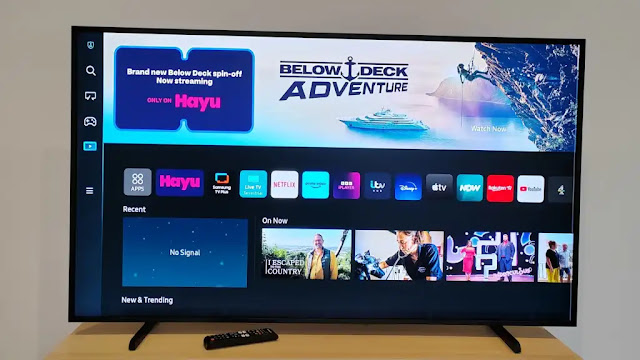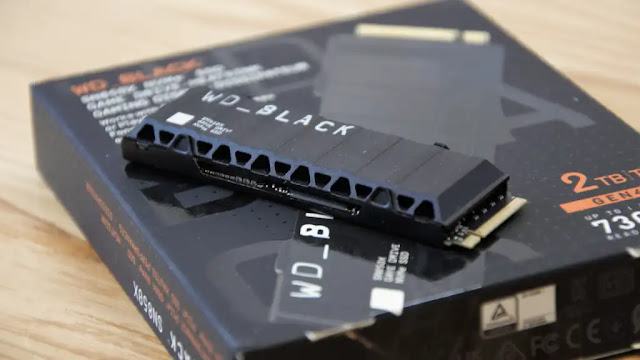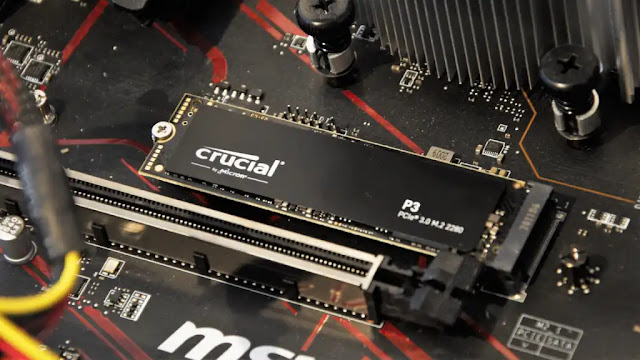QNAP’s new two-bay NAS box might look like its predecessor, but with a major boost in internal performance and significant improvements in the QTS operating system, this is in another league. Here's our QNAP TS-231P2 review.
Should I Buy The QNAP TS-231P2?
Our Verdict
- A small but remarkably powerful NAS box with buckets of functionality, scalability and value that demonstrates well how seriously QNAP now takes its NAS product range.
Price When Reviewed
- US$249 (1GB), US$299 (4GB)
The market for personal NAS (Network Attached Storage) has blossomed in recent years. Propelled by the power and efficiency of modern ARM processors, the makers of these devices have long left behind the initial objective of affordable file storage and distribution.
While lots of brands have tried their hand at NAS drives, a few names have risen above the rest, including QNAP.
The company makes a range of NAS devices aimed at home, small business and even Enterprise customers. The QNAP TS-231P2 is at the cheaper end of that spectrum, takes just two drives and is meant to provide a flexible location for storing and distributing personal files over a small home or business network.
But don’t assume for one minute that this is just a file server and DNLA streaming box because the QNAP TS-231P2 is so much more than that.
Price
QNAP makes two models of the TS-231P2, a cheaper 1GB RAM that costs as little as £214.80 from Amazon ($249 from Amazon US) and the 4GB model - the version we reviewed - costs £295.98 ($299). As you can upgrade the internal RAM using a provided SODIMM slot, you could buy the cheaper model and upgrading it yourself with a spare DDR3 SODIMM.
The competition includes Synology’s DiskStation DS718+, the firm's only two-bay enclosure with dual-gigabit LAN, and that costs around £400 ($399). The DS218 is about £50 less, but only comes with 2GB of RAM and critically, a single LAN port.
A more direct competitor is the ASUSTOR AS6102T, a design that uses an Intel Dual-Core 1.6GHz (burst up to 2.48GHz) processor, has dual LAN and is also memory expandable. The AS6102T costs £296.14 ($289.99) for the 2GB RAM model. There's also Synology's DS218 and DS218+.
You can also still pick up the prior TS-231P, which for around £175 ($178.99) for the 1GB model is very reasonably priced for a dual-LAN NAS design. These prices do not include any hard drives, for which you will need additional budget depending on how much storage you need.
For more alternatives, see our list of the best NAS drives.
Features And Design
This new TS-231P2 design is a revamp of QNAP’s previous QNAP TS-231P that first appeared back in late 2016, and garnered much praise at the time.
From the outside, the new hardware is almost indistinguishable from its predecessor. It retains the same exterior, two vertically mounted drive trays and two buttons on the front fascia.
One of these powers the device on and off, and the other works in conjunction with the front-mounted USB port to copy the contents of any port inserted media to the internally mounted drives.
They also both have three USB 3.0 ports, dual Gigabit LAN and use a 1.7GHz ARM CPU. But dig a little deeper and the changes that have been made on the TS-231P2 start to look less superficial.
Where the TS-231P used the Alpine AAL-212 dual-core CPU, the new model has Annapurna Labs AL-314, a much more powerful quad-core chip.
The memory was previously 1GB of DDR3 RAM, but you can get the new model with a 4GB option, and there is a user accessible SODIMM slot that allows a RAM boost up to 8GB.
The only downside to these changes is that the enhancing computing platform can use more power, up from an operational peak of 15.6W (with 2x 1TB drives) to 23.66W, a good 50 percent increase.
Having more CPU power with just two drives to manage isn’t likely to make much of an impact on file-serving performance, as these values are capped by the bandwidth limitations of Gigabit Ethernet.
That begs the question, is this model any more desirable NAS than the one it replaces?
That depends on what you’re expecting a NAS to do with it. The extra processing power and RAM in this design can leverage the more sophisticated QTS OS now released, in ways that its predecessor could not. If you expect to use those features and not just the basics services, then this hardware is certainly worth the extra money.
If we’ve any real complaints about the QNAP TS-231P2 hardware, they’re minor ones. Tool-less drive trays would be nice, as would better anti-vibration cushioning to reduce audible drive noise.
In all other respects, the box does what is required, providing a solid platform for the software components to shine. And, they certainly do that.
Software Enhancements
The undisputed leader of the small NAS market is Synology, with its DSM operating system and its 100+ collection of installable apps (which include some you will actually need to install).
Until recently this put DiskStations a country mile ahead of their opposition, many of which have either very limited app selections indeed.
The TS-231P2 was built to run QTS 4.3, QNAP’s own embedded Linux platform. For this reviewer, the enhanced capabilities of QTS 4.3 over previous releases was the major revelation of testing the device.
The interface is very similar to using a desktop Linux distro, with multiple windows and the full GUI experience of installable widgets and apps.
Depending on the client hardware in use you can even tailor it to be touch friendly or even use frameless browser mode, whichever suits.
The similarities between this and Synology’s DSM are numerous, with the QNAP’s interface being superior to its competitors in some aspects. However, there are some subtle differences in QNAP’s approach where they’ve chosen not to assume the user will install everything they need.
Where on Synology the core feature set is paired down, and extra functionality added as a user selected App, the QNAP approach is a more balanced exercise with more default features.
By default iTunes Server, DNLA Media Server, Web Server, LDAP, SQL Server, Antivirus and RADIUS Server are all installed on QTS 4.3, and you can’t easily uninstall them.
They don’t need to be enabled, but they’re all included in the QTS OS without the user loading them from the application store.
The collection of 82 apps that QNAP offers currently a little less than Synology, although because some of the pre-installed features on the QNAP the actual difference is much less significant.
The select is also well-rounded, with stalwarts like WordPress, Sugar CRM, Plex, Joomla, Dolphin and Python all included. Also, QNAP has 22 of its own branded tools, including a marvellous selection of media distribution tools, and backup utilities. Oddly, many of them - like ‘Photo Station’ - have the same name as their Synology counterparts.
Alternatively, you can use the TS-231P2 as a private Cloud, with QNAP providing the myQNAPcloud portal as a means to remotely connect to the device or share the contents with others.
One of the best aspects of the Synology hardware is Cloud Station Drive, a means to sync folders across multiple computers, and QNAP has this same functionality with Qsync.
Qsync covers Windows PC and Apple Mac hardware, and you can Cloud sync from other devices using their myQNAPcloud Connect apps.
Another plus is Container Station, an app that as the name suggests is designed to work with LXC and Docker lightweight virtualisation technologies. With the Container Station developers can build IoT apps and even maintain your own IoT cloud.
We could warble on here for a long time about the wide-ranging and elegant software technology that QNAP has marshalled to support its NAS strategy, but safe to say that it matches anything that Synology has delivered so far, and even surpasses them in places.
If you like apps on your NAS, there is now a realistic alternative to Synology.
Expansion
With only two drives in this system, the likelihood is that most users will be paranoid and use redundancy reducing their total capacity to the size of just one drive. QNAP addressed this limitation with two expansion units the UX-500P and UX-800P. These respectively offer a further 5 or 8 drive bays, connected via external USB 3.0 ports.
You can use two of the three available ports for expansion enabling an extra 10, 13 or 16 drives, depending on which two UX models you use.
For 1GB RAM models the maximum is 144TB, where those with 4GB or more can have 250TB of drives on one single NAS box. You can also have multiple NAS boxes collated into larger storage pools, should you need excessive scalability.
Considering that most people would consider a dual-drive solution is purely for home users, the huge scalability potential entirely contradicts that assertion.
Performance
The speed of most NAS devices is often limited by their external connections, and the TS-231P2 is no exception. The Annapurna Labs AL-314 SoC is powerful enough to run two hard drives and simultaneously flood the dual gigabit LAN channels that QNAP provided.
Testing one port with a gigabit-connected client and using two Seagate Iron Wolf 4TB drives in the TS-231P2 delivered a read speed of 118.5 MB/s and writes of 117.9 MB/s. That’s close to the practical ceiling of what a single gigabit Ethernet channel can achieve.
For those with switches that support channel bonding you can use both ports, but you won’t get double the performance unless the client PC also has dual Gigabit LAN ports and can channel bond.
The configuration on the box allows a range of Port Trunking modes, that can increase the available bandwidth while offering both load balancing and fault tolerance.
For those with typical home switches, you can still set a fault tolerant mode where should the link fail on one port it will automatically flip to the second line. You can use Adaptive Load Balancing mode, a channel bonding option that does not require a special switch and allows the NAS to talk to two clients using different lines for maximum bandwidth.
It is worth saying that dual LAN ports and this level of bonding sophistication usually isn’t available at this price point, and is often held for Enterprise targeted NAS solutions.
Specs
- Versions: TS-231P2-1G (1G RAM), TS-231P2-4G (4GB RAM)
- CPU: Annapurna Labs AL-314, 4-core,1.7GHz
- System Memory: 1GB DDR3 RAM or 4GB DDR3 RAM
- RAM slot: 1 x SODIMM (Max. 8GB)
- Flash Memory: 512MB NAND flash
- Hard Drive bays: 2
- Drive Interface: SATA 6Gb/s, 3Gb/s HDD or SSD
- Hot-swappable
- USB: 3 x USB 3.0 port (Front x1
- Rear x 2)
- LAN Ports: 2 x GbE RJ45
- LED Indicators: System Status, HDD, USB, LAN
- Buttons: Power, Reset, USB One-Touch-Copy
- Dimensions: 169 x 102 x 219 mm
- Weight: 1.28kg empty
- Power Consumption (W): HDD standby 8.81W, In operation 23.66W
- Power Supply: AC adapter, 65W, 100 - 240V
- [Price inc VAT]























0 comments:
Post a Comment